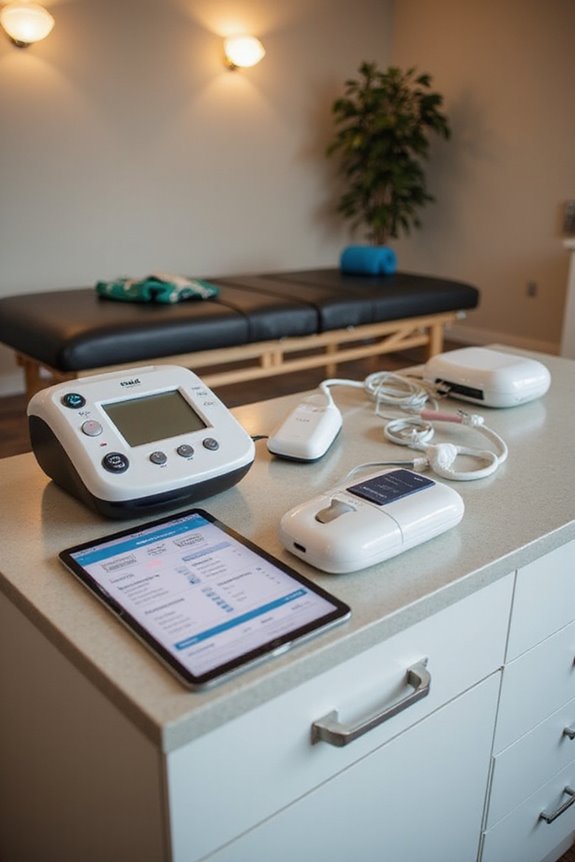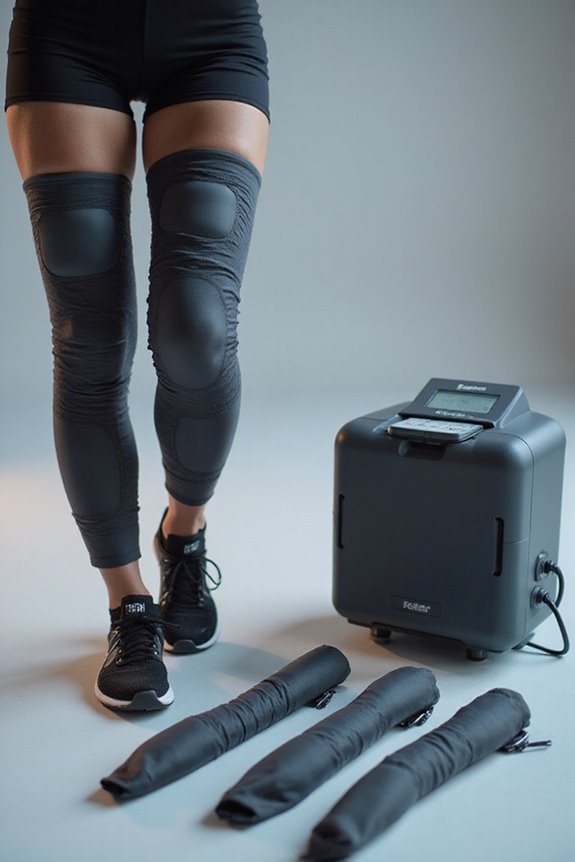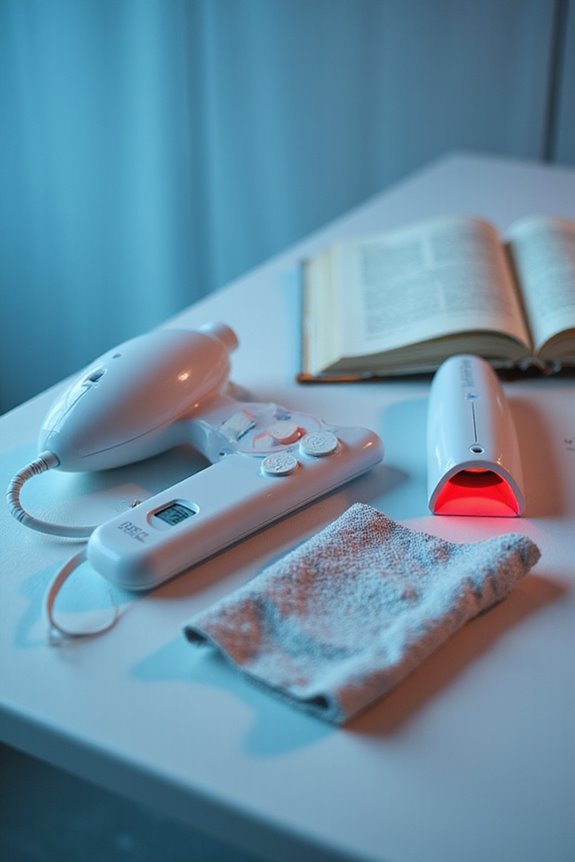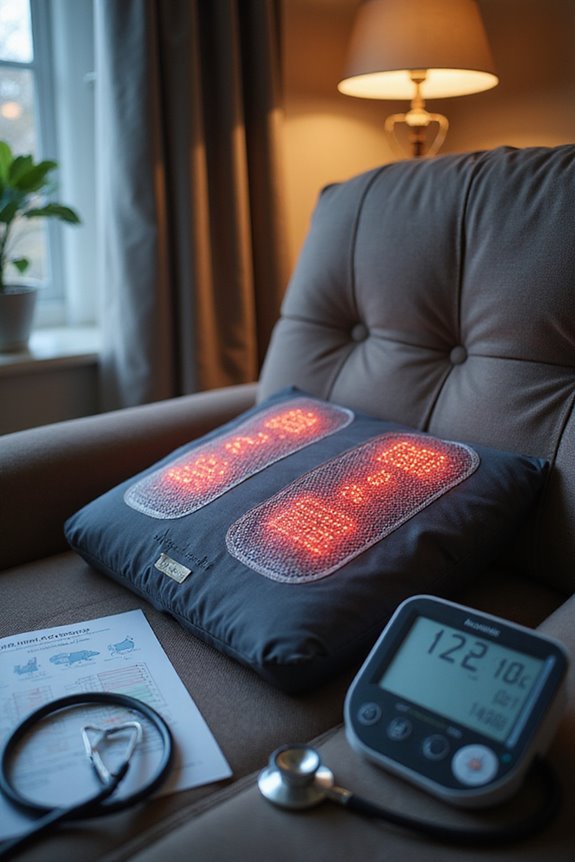Pain relief devices are integrated into treatment plans to enhance pain management through targeted therapies. They include Spinal Cord Stimulators, TENS units, and wearable devices, which can be customized based on individual needs. These technologies often connect with Electronic Health Records (EHR) for improved safety and treatment coordination. Studies indicate that early integration may reduce opioid reliance by 20–50%. Understanding their extensive role in pain management may reveal further insights into their effectiveness and applications.
Key Takeaways
- Pain relief devices are incorporated into treatment plans by assessing individual patient needs and customizing therapies based on their pain conditions.
- Integration with Electronic Health Records (EHR) allows for secure patient data management and facilitates the selection of complementary therapies.
- AI algorithms analyze patient data to refine pain diagnosis and tailor device-assisted treatments, enhancing the effectiveness of pain management strategies.
- Clinician training and patient education are essential for the successful integration of devices into treatment plans, ensuring compliance and optimal use.
- Continuous monitoring through wearable technology allows for real-time adjustments to treatment plans, improving overall pain management outcomes.
Overview of Pain Relief Devices

Pain relief devices represent a significant advancement in the management of chronic and acute pain conditions. These devices utilize various pain relief mechanisms to alleviate suffering and improve quality of life.
Types of Devices:
- Spinal Cord Stimulators (SCS): Used for chronic pain in limbs and trunk; effective for conditions like failed back surgery syndrome.
- Transcutaneous Electrical Nerve Stimulation (TENS): Non-invasive, blocks pain signals effectively.
- Intrathecal Drug Delivery Systems: Deliver medication directly to spinal fluid, minimizing side effects.
- Wearable Devices (FIR Technology): Enhance blood circulation and healing.
- SemiCera® Technology: Provides continuous heat therapy for natural healing.
Device effectiveness varies by individual, with targeted therapies reducing systemic medication use and improving outcomes in multidisciplinary pain management plans. Many TENS units offer customizable settings that allow for personalized pain relief experiences.
Role of Technology in Pain Management
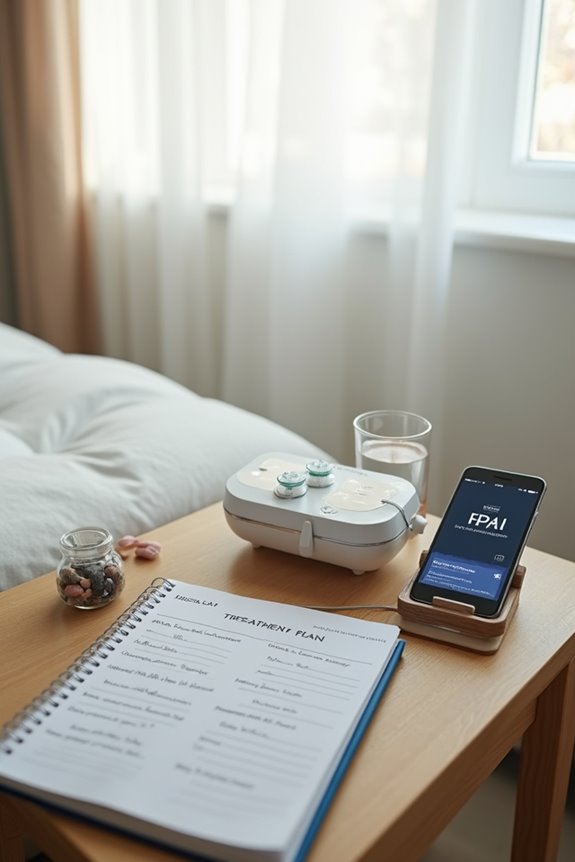
Advancements in technology have revolutionized the landscape of pain management, enhancing the efficacy of treatment strategies.
- AI Algorithms: These systems analyze extensive patient data, refining pain diagnosis and tailoring treatment plans through predictive modeling.
- Wearable Technology: Devices, such as TENS units, facilitate continuous pain monitoring, allowing real-time adjustments to enhance patient outcomes.
- Virtual Reality: This immersive technology distracts patients from pain, proving effective in both chronic and acute scenarios, with flexibility in therapy sessions based on patient feedback.
- Telemedicine Applications: By expanding access to specialized care, remote consultations enable timely modifications to treatment plans, improving adherence and collaboration among healthcare providers.
Together, these innovations greatly contribute to personalized, effective pain management approaches.
Integration With Electronic Health Records

The integration of Electronic Health Records (EHRs) with pain management strategies marks a significant evolution in patient care. This synergy enhances patient data security while allowing for EHR customization options tailored to individual needs.
- Patients can select complementary therapies within EHR systems, promoting non-drug pain management options.
- Decision-making tools embedded in EHRs facilitate personalized treatment choices and streamline clinical care pathways.
- Telemedicine integration improves access for chronic pain patients, particularly in underserved areas.
- Clinical decision support tools provide real-time, evidence-based guidance, reducing prescribing errors and enhancing treatment adherence.
- Wearable device data feeds into EHRs for continuous monitoring, fostering timely clinical interventions.
These advancements collectively aim to improve patient outcomes and overall satisfaction in pain management practices.
Personalized Treatment Approaches

Personalized treatment approaches in pain management emphasize the necessity of individualized care to address the diverse experiences of chronic pain sufferers.
- Comprehensive Assessments: Extended evaluations explore pain history, mental health, and functional impairments, guiding tailored interventions.
- Genetic Insights: Pharmacogenetics informs drug choices, enhancing treatment efficacy and minimizing adverse reactions through individualized therapies.
- Holistic Integration: Combining pharmacologic methods with nonpharmacologic therapies guarantees a multifaceted approach to pain relief.
- Functional Goals: Treatment plans focus on improving daily activities and mental well-being, aligning with patient-centered objectives.
- Psychosocial Considerations: Addressing psychological factors enhances coping strategies and overall recovery. Additionally, incorporating plant-based ingredients in topical treatments can further support holistic care strategies.
These adaptive strategies facilitate a collaborative environment, ultimately improving patient satisfaction and engagement in their care journey.
Reducing Opioid Dependence
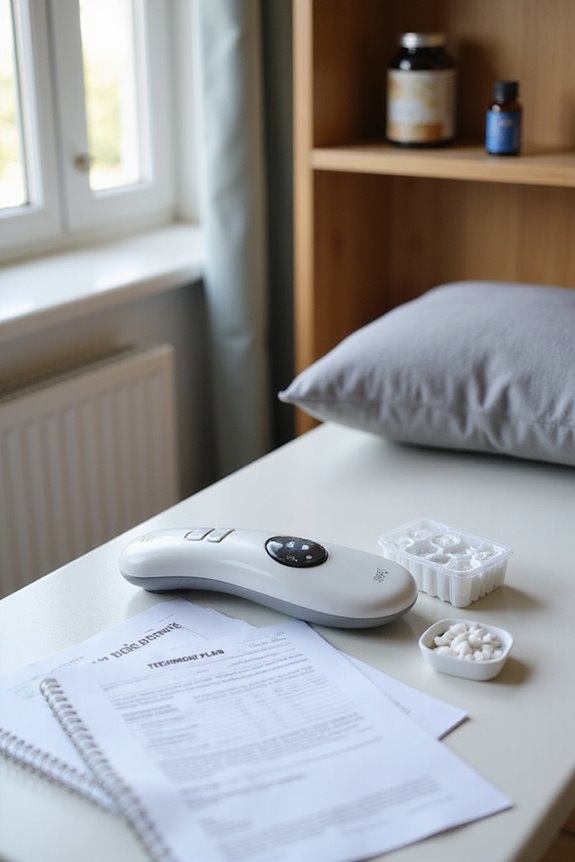
Reducing opioid dependence has become a significant focus in the field of pain management, particularly as the impact of opioid misuse continues to be felt across healthcare systems. Pain relief devices offer effective opioid alternatives, decreasing reliance on narcotics for both acute and chronic pain.
- Non-pharmacological methods, such as TENS and spinal cord stimulators, effectively manage pain.
- Studies show a 20–50% reduction in opioid prescriptions with device-assisted pain control.
- Early integration of these devices can limit opioid initiation.
- Patients using these devices report pain relief comparable to low-dose opioids.
- The use of technology minimizes opioid exposure, lowering the risk of developing opioid use disorder.
Incorporating pain relief devices enhances safety and efficacy in pain management strategies.
Enhancing Clinical Collaboration
Enhancing clinical collaboration is essential for the effective integration of pain relief devices into patient care. This process relies on interdisciplinary teamwork, where various healthcare professionals, including physicians, pain specialists, and physical therapists, come together for thorough treatment planning.
- Shared data platforms facilitate real-time communication, allowing adjustments to device settings based on patient responses.
- Collaborative decision-making incorporates device data into medication management and physical therapy regimens, leading to enhanced treatment outcomes.
- Interdisciplinary research partnerships foster a deeper understanding of device mechanisms, optimizing clinical protocols.
Patient Engagement Through Technology
Patient engagement through technology has become a pivotal aspect of modern pain management strategies, as it empowers individuals to actively participate in their care.
Digital Platforms
- Mobile apps provide real-time feedback, enhancing medication adherence and therapy compliance.
- Pain-tracking applications facilitate better communication between patients and providers.
- Educational resources empower patients to manage their pain proactively.
Telemedicine
- Virtual consultations improve accessibility, removing barriers for chronic pain patients.
- Remote check-ins allow for timely adjustments in treatment.
Data-Driven Personalization
- Advanced technologies analyze patient data, tailoring treatment plans for better outcomes.
- Real-time data inputs enable dynamic therapy adjustments. Additionally, incorporating devices like TENS units can enhance pain management strategies by providing targeted relief during treatment.
These developments underscore the importance of patient empowerment and technology adoption in improving long-term management of pain.
Challenges in Device Development and Research
The development and research of pain relief devices face multiple challenges that can impede innovation and accessibility.
Cost and Accessibility Constraints
- Advanced devices often carry high costs, limiting patient access, especially in low-income regions.
- Costs extend beyond the device to include surgical implantation and rehabilitation, raising overall treatment expenses.
Safety and Clinical Risks
– Implantable devices pose risks such as hypersensitivity reactions and infections, affecting acceptance and outcomes.
Regulatory and Validation Challenges
- Complex regulatory pathways require detailed safety and efficacy assessments, creating significant hurdles.
- Lack of standardized guidelines complicates device utilization and integration into treatment plans, impacting device validation.
Technological Complexities
– Designing devices that accurately target pain involves sophisticated technologies and balancing efficacy with user-friendliness. Additionally, ensuring safety features like automatic shut-off and overheat protection is crucial for user trust and device effectiveness.
Frequently Asked Questions
What Types of Pain Can These Devices Effectively Treat?
Pain relief devices effectively manage various types of chronic pain, including neuropathic and musculoskeletal conditions, while also addressing acute pain from injuries or postoperative issues, fostering a sense of belonging and support among those suffering.
How Long Do Pain Relief Devices Typically Last?
About 42% of spinal cord stimulator users maintain regular device usage after 24 months. Device longevity varies greatly based on type and usage frequency, with rechargeable models lasting over a decade, enhancing long-term pain management.
Are There Any Risks or Side Effects Associated With These Devices?
Concerns regarding device safety arise, highlighting potential side effects such as skin irritation and discomfort. Awareness of these risks is essential for individuals considering pain relief devices, fostering a supportive understanding within the community for informed decisions.
How Does Insurance Coverage Work for Pain Relief Devices?
Ironically, while pain relief devices promise comfort, insurance reimbursement often demands rigorous proof of necessity and prolonged suffering. Device eligibility hinges on strict criteria, leaving many patients traversing a labyrinthine approval process just for relief.
Can Patients Use These Devices Alongside Traditional Medications?
Patients can safely use pain relief devices alongside traditional medications, as device compatibility generally guarantees minimal medication interaction. This combination enhances pain management, promoting a sense of community among those seeking thorough relief strategies for chronic conditions.

